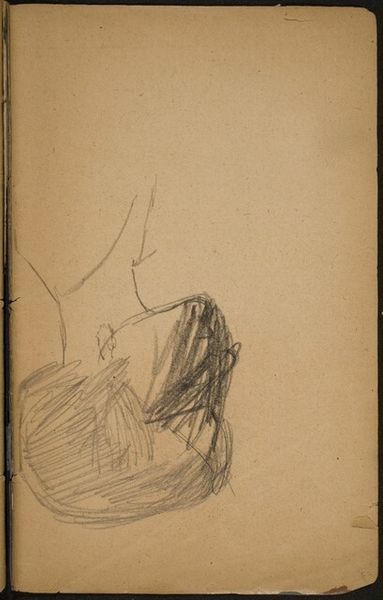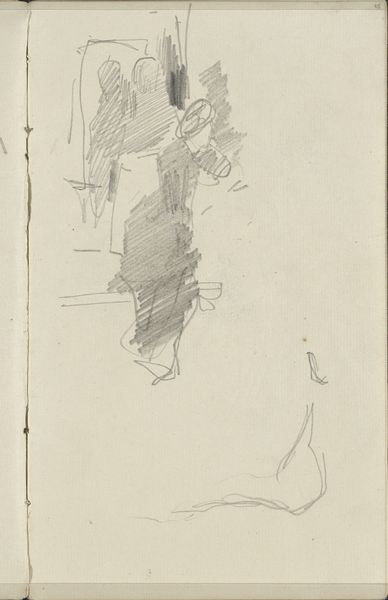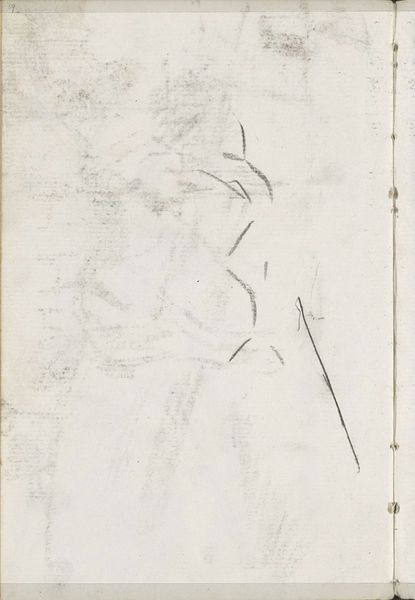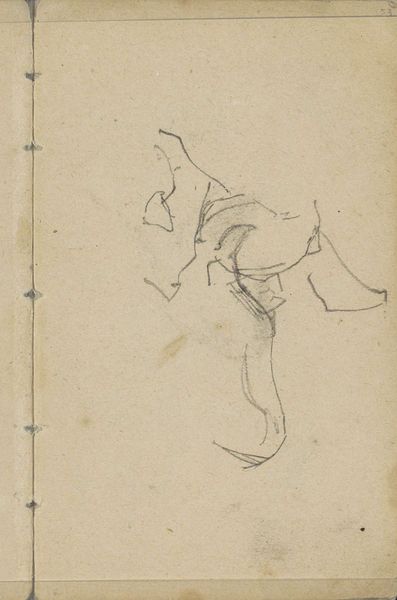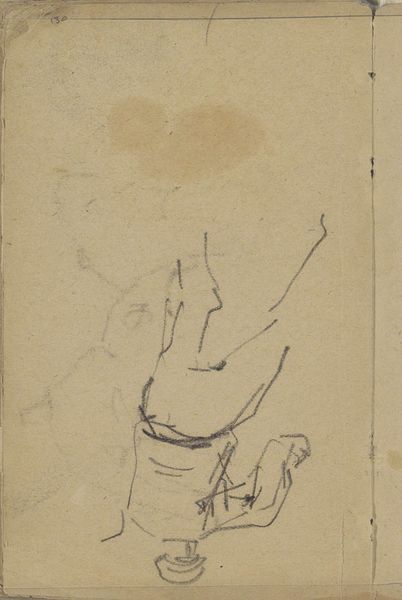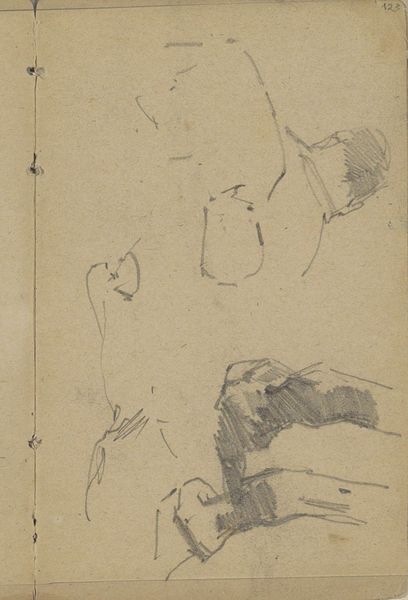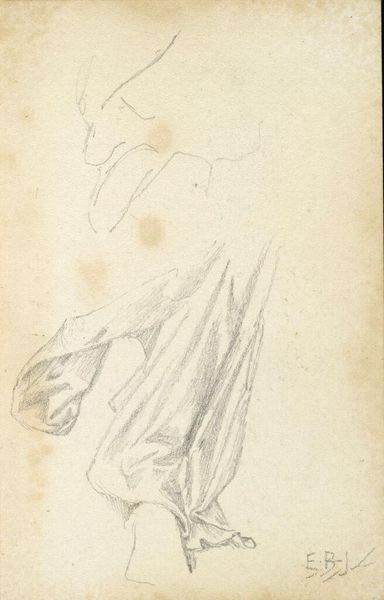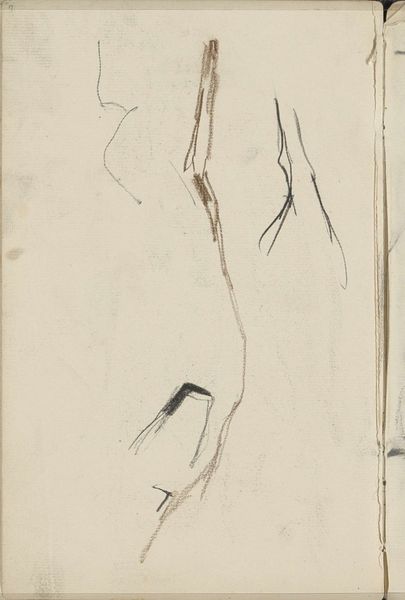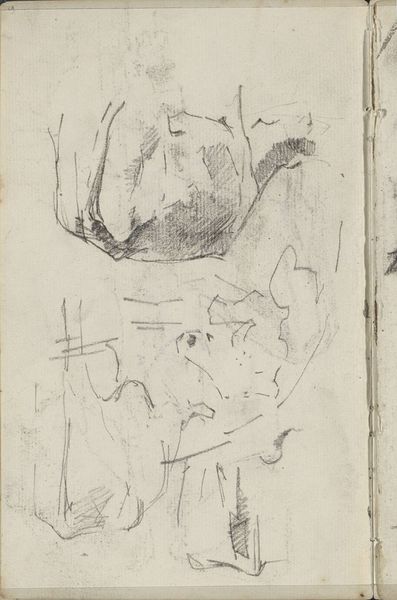
drawing, pencil, frottage
#
portrait
#
drawing
#
impressionism
#
pencil sketch
#
sketch
#
pencil
#
sketchbook drawing
#
frottage
Copyright: Rijks Museum: Open Domain
Curator: Today we're looking at George Hendrik Breitner's "Portret van een onbekende man," a pencil drawing made sometime between 1881 and 1883. It's part of the Rijksmuseum collection. What strikes you immediately? Editor: Its incompleteness is what stands out. There's a real sense of vulnerability and quietness about it, the subject seems caught in a moment of contemplation, as if only partly present, a sort of refusal to participate in his own image. Curator: Exactly, that incompleteness invites close attention to what *is* there. Notice the economy of line. Breitner captures the essential structure of the sitter's form with remarkable efficiency. There’s a structural elegance here. See how the strokes vary in weight, defining contours, suggesting shadow. Editor: Yes, but this very ‘elegance’ raises some questions for me. This could very well be a portrait of someone on the margins, sketched in passing. Who was this 'unknown man'? And what does it say about whose likeness gets meticulously preserved versus casually sketched and left unnamed? The lack of formal finish can feel dehumanizing, reflecting the societal neglect of the subject. Curator: That’s a powerful reading, placing the social at the forefront. Yet, I am drawn back to the intentionality in the use of line. Note the precision of certain areas like the curve of the back, balanced against the vagueness of other strokes. Editor: But does that intentionality excuse a practice of quickly jotting down the image of a marginalized person without their consent or knowledge? Can we separate artistic technique from ethical responsibility when dealing with human subjects, especially nameless ones? It's hard not to see a class dynamic at play, particularly if Breitner didn’t accord this sitter the dignity of representation he gave more elite subjects. Curator: It certainly prompts complex ethical questions about representation and anonymity. However, considering solely from a formal angle, there is an exquisite contrast between areas defined in considerable depth of tone, and others which barely emerge from the background page. Editor: It makes me consider what absences haunt the museums that exhibit this kind of work. Whose stories are deliberately forgotten, obscured by this type of so-called "artistic license?" Curator: Thank you. It really adds depth to the viewing, doesn't it? Editor: It is a disquieting beauty. A painful reminder of art’s entanglement with social and economic realities.
Comments
No comments
Be the first to comment and join the conversation on the ultimate creative platform.


